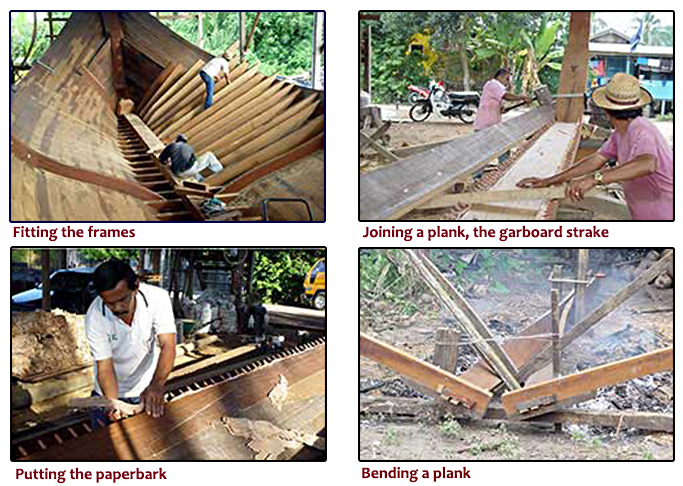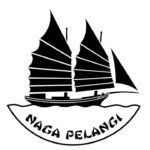The Malay Boat Building Technique
Within the Malay Archipelago, early techniques were developed for building wooden boats without a plan by building first the hull and fitting the frames later.
In this archaic technique which is singular in boat building, the Malays use a wood called Chengal (Neobalanocarpus Heimii): The planks are fire bent and joined edge on edge (carvel) using "pasok" (wooden dowels) made from Penaga-ironwood (Musea ferrea), creating a hull as if it were made in one casting.
Unlike in western boat building where a caulking material is hammered into a groove between the planks, the Malays place a strip of "kulit gelam" (Malay: skin of the Gelam tree) of a Maleleuka species over the dowels before fitting the new plank. This 1 – 2 mm gasket of a natural material has remarkable sealing properties, swelling upon contact with water and keeping the boats dry for years to come.
This ancient building technique, the origins of which might date back to the Proto-Malay migrations that colonised SE-Asia and the Pacific islands thousands of years ago can still be observed today in some places of Indonesia and in the Terengganu area of Peninsular Malaysia.

